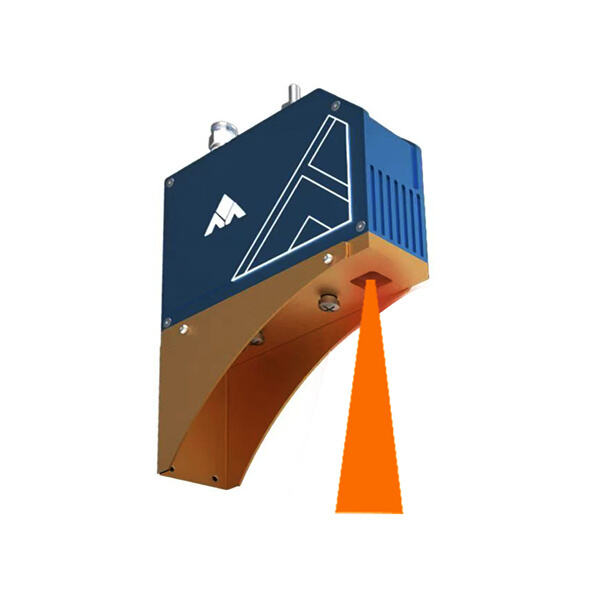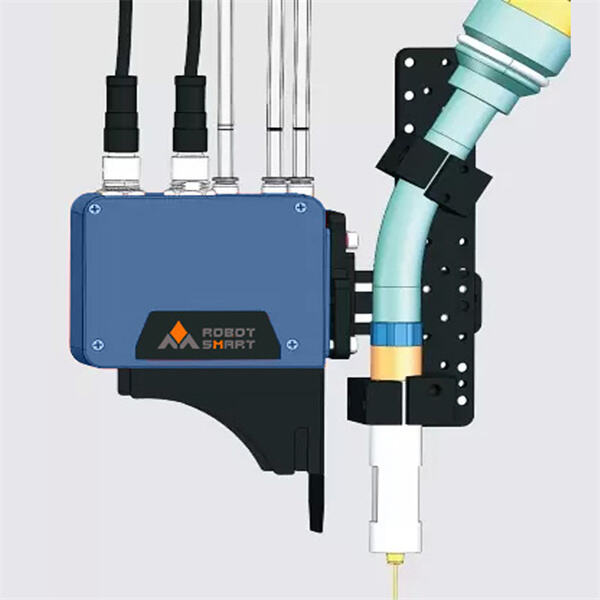Seam tracking is an essential, smart, and clever technology that helps a welder stay on track while welding two pieces of metal together. It follows the seam, the line where the two pieces of metal meet, and it does this with special sensors and cameras. This guarantees that the weld is executed at the appropriate position every single time. MINYUE seam trackersensor used in robotpngsensor used in robot is like an awesome assistant or a helpful buddy that never leaves your side while you perform welding tasks.
With seam tracking, welders know their welds will also be accurate and precise. Sensors and cameras watch the seam continuously to confirm things are proceeding smoothly. If things need to be altered, the technology can do that faster than making a weld that goes off course would require. With no flaw in the weld, this ensures the weld is strong and durable. It’s like having a watchful friend or a guardian angel over your shoulder, making sure that you do your welding like a pro!

The Benefits of Using a Seam Tracker in Welding Projects: It saves time and money because one is getting less rework or repair work done. MINYUE welding seam tracker ensures that welders get it right the first time. So, they don’t have to go back to rework/prototype anything and waste a lot of time doing that. Second, seam tracking increases weld quality by making sure the weld is performed at precisely the right spot every single time. This is super critical because it ensures that the end effect is solid and durable in addition to beautiful. In short, a seam tracker in welding projects smoothens, streamlines, and simplifies the whole procedure for the welders.

For successful welding projects, precision and efficiency are of the utmost importance. MINYUE laser tracker facilitates both of these attributes by quickly and precisely directing the welders along the seam. That means that welders can work faster without sacrificing the quality of their work. Seam tracking also means every single weld is spot on, giving a much improved final product. You can think of it as a magic helper tool for producing perfect welds every cycle!

Seam tracking technology can be applied to various types of welding jobs and industries. It is commonly used in industries such as automotive, aerospace, and construction. Seam tracking is a technique used in the automotive industry to assist in the welding process of various car parts and components to ensure a robust and durable weld. That is a huge deal for the safety and operation of the vehicles. Seam tracking technology is already used in the aerospace industry to ensure the highest level of precision and accuracy for welded parts, as it is crucial for safe flight. Seam tracking technology is widely used in construction to build solid buildings and infrastructure that will withstand the test of time. In summary, MINYUE Laser seam tracking system is a versatile solution that can be used in all areas of the welding space, making it an indispensable tool for welders worldwide.
Beijing Minyue Technology Co.,LTD,as the world's leading high-tech enterprise of non-teaching intelligent application of industrial robots.We specialize in flexible intelligent manufacturing with our self-developed RobotSmart - Intelligent Decision Making System, SmartVision - Binocular Structured Light Vision System, and SmartEye - Laser Vsion Seam Tracking System. Provide a new generation of intelligent robot welding and cutting solutions.
Provide powerful welding robot front loading, side loading, inverted loading, gantry mounting, intelligent trajectory planning for multiple robots, multiple external axes, and positioner for cooperative work. Realize robot motion simulation, collision detection, singularity avoidance and axis limit detection.
Fast, accurate, completely No-Programming, high efficiency and high precision. It solves the complicated teaching process of traditional robots and saves the downtime of teaching process.
Adopting the function of finding and tracking, scanning the weld seam, confirming the position and information of the weld seam, correcting the position of the weld seam between the 3D digital model drawing and the actual workpiece, and solving the problem of bias weld due to the error of incoming materials and thermal deformation.